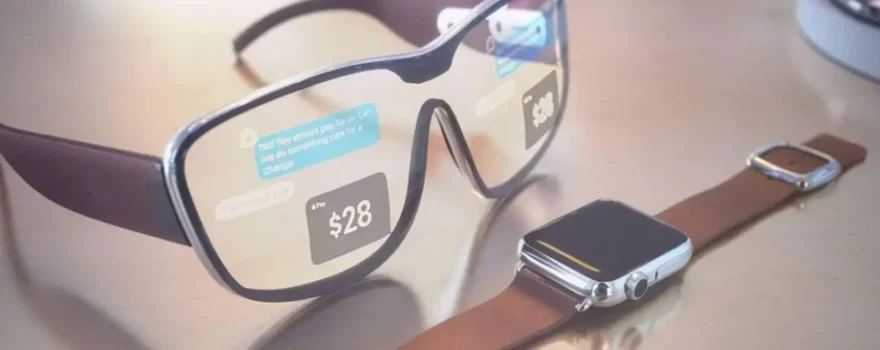
The upcoming smart glasses, Apple Glass, is expected to introduce and redefine AR for consumers in the west, giving you extensive AR apps for iOS in augmented reality glasses. This article will detail everything we know about Apple Glass, and we will update it as new information becomes available.
Leaks about Apple Glass point to an announcement in 2023 with a release later that year or in 2024. The reason for the later delivery date is that Apple will focus efforts on its upcoming Apple Reality One mixed reality headset .
Further updated rumors from Haitong International Tech Research analyst Jeff Pu indicate that the release could even be delayed until 2025/2026. Pu explained to MarketWatch that the delay is due to “design issues,” echoing similar difficulties that Apple Reality One had moving from virtual reality to a mixed reality headset.
The cost of Apple Glass
To keep costs down, Apple Glass is said to be a tethered device that requires an iPhone or iPad to work, which explains the current rumors pointing to an affordable price of $499, as well as any additional fees for prescription earmolds.
For context, Apple Glass is said to be more affordable than its Asian counterparts. For example, Oppo Air Glass , sold only in China, sells for 4,999 yuan (about $745), TCL NXTWEAR 1st Generation for $899 (with the cheaper Air version ), and Huawei X Gentle Monster Eyewear II costs $638 in the US. The only Western competitor is Vuzix with the Binocular Shield and Blade 2, the price of the latter is 1280 euros excluding cost. VAT in our store .
It is worth noting that other reputable analysts predict a much higher price for Apple Glass. For example, renowned analyst Ming-Chi Kuo expects a price of $1,000, while Bloomberg’s Mark Gurman suggests a price of around $2,000.
What will Apple Glass look like?
The design of Apple Glass is not yet known. However, preliminary marketing materials point to a classic black Clark Kent aesthetic.
In addition, current prototypes show a single LiDAR sensor located on the right temple, with no other cameras or tracking sensors.
Apple Glass will charge wirelessly from the included stand. Other than those details, we don’t know any color options or how much Glass will weigh. In any case, it is likely that the optics will be waveguide, as this allows for a thinner and lighter device.
What features will be in Apple Glass
In many ways, future Apple Glass features will mirror the AR developments on the iPhone and iPad with updated LiDAR and AirSwipe sensors, StreetView AR and Live Text in the iOS 15 update.
What is GlassOS?
Mention of its own assistive reality operating system called GlassOS was found in the iOS 13 update. Similar to GlassOS, another operating system called RealityOS was discovered by iOS developers in the open-source GitHub repositories released by Apple. Little is known about GlassOS or RealityOS, except that Apple will reportedly not participate in the meta-universe, but will instead go its own way.
Apple Glass will be an addition to AR apps
Apple Glass will be paired with an iPhone or iPad, an extension of Apple’s current AR software strategy.
In other words, it is similar to how consumers use the Apple Watch, as Apple Glass will be used to read notifications, emails and calls. However, Apple Glass will be even more different, placing existing augmented reality features such as AirSwipe, StreetView AR and Live Text in front of consumers’ eyes.
Apple Glass for all eyes.
While this is still unsubstantiated, since a patent application can point to any product offering, Apple has patented “optical assembly” technology. This technology allows anyone with low vision to use Apple Glass because multiple optical lenses automatically adjust to the user’s vision.
Projection-based AR
In addition to the invention of the optical node, Apple has filed another patent that allows 3D objects to be directed into the user’s eyes. This will reduce the need for any optics and reflect the natural operation of our eyes, making augmented reality more realistic and natural.

 Get in Touch
Get in Touch 


